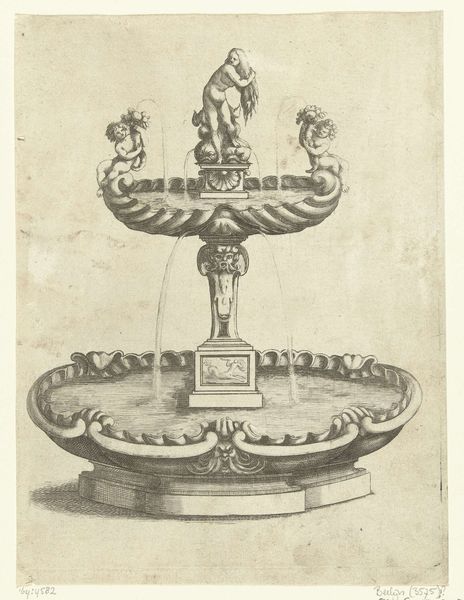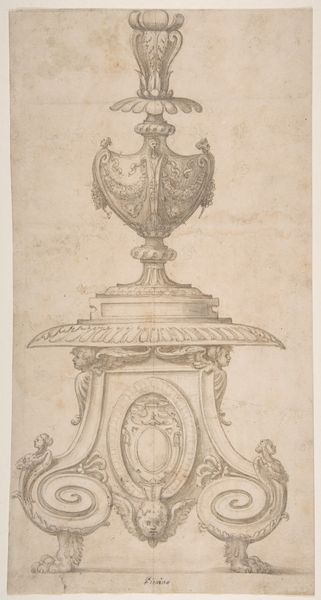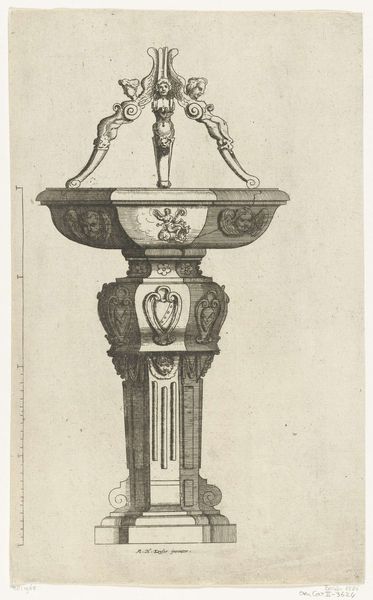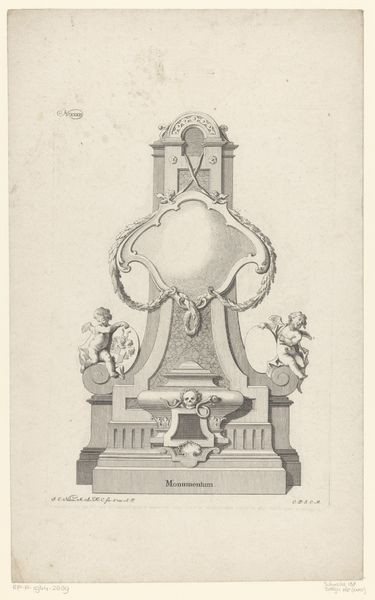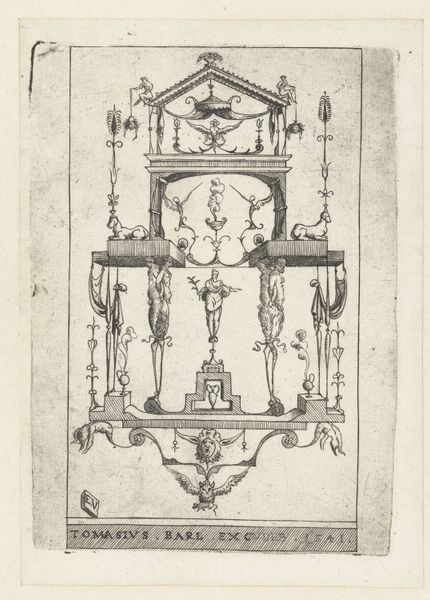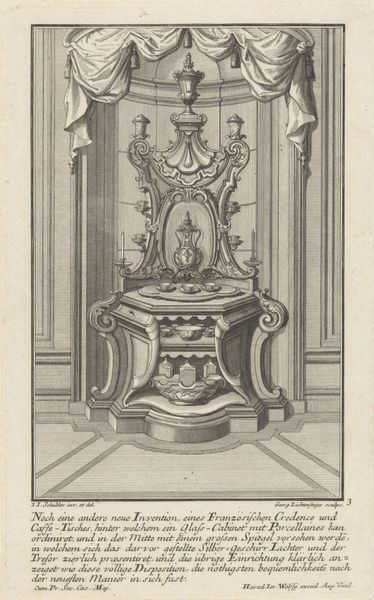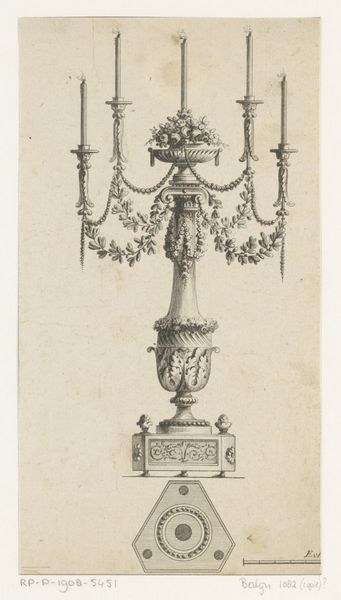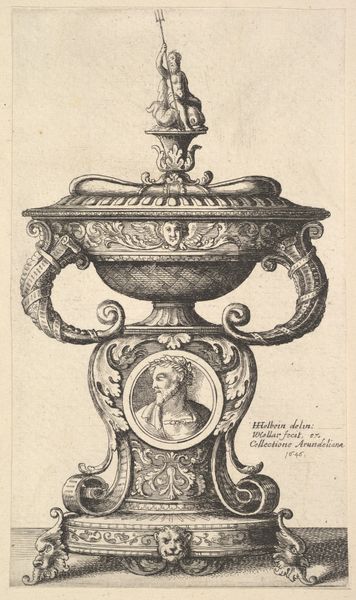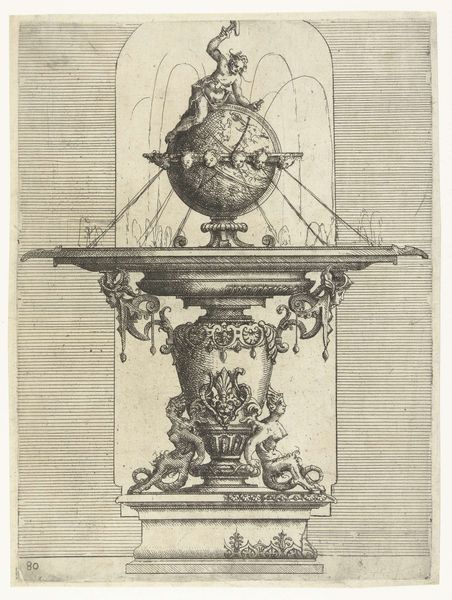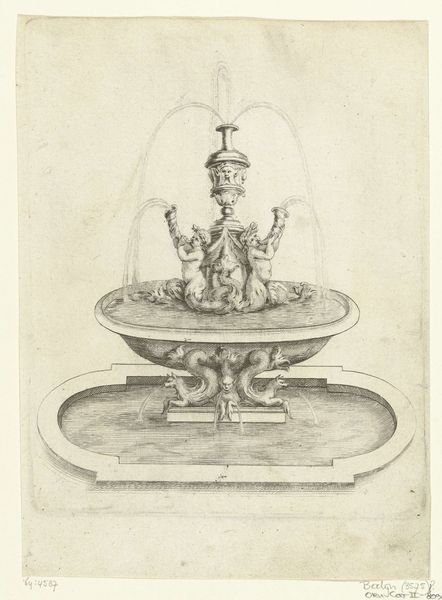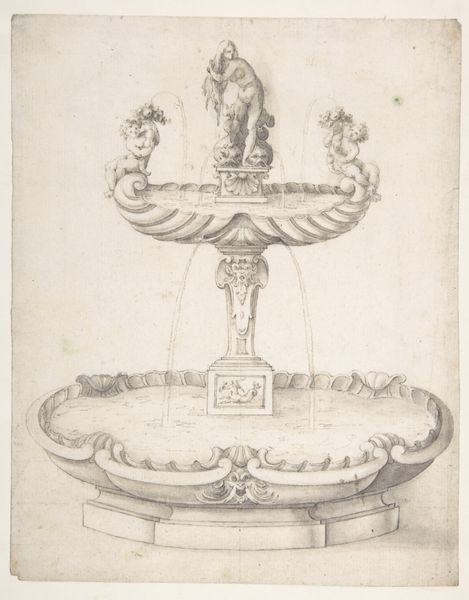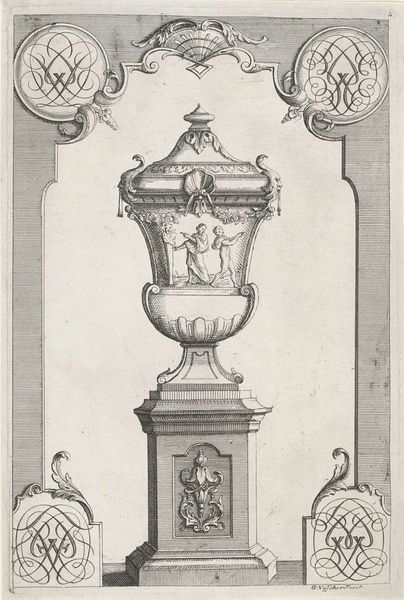
drawing, print, engraving, architecture
#
drawing
#
baroque
# print
#
landscape
#
geometric
#
engraving
#
architecture
Dimensions: height 206 mm, width 162 mm
Copyright: Rijks Museum: Open Domain
Curator: This drawing, dating from 1680 to 1707, is titled "Fontein met waterbassin op hoog voetstuk"—"Fountain with water basin on a high pedestal." Though the artist remains anonymous, it offers an intriguing glimpse into late 17th or early 18th-century design. Editor: Immediately, the piece exudes an almost dreamlike state—a classical composition rendered with a subdued palette of gray tones. It feels delicate and considered, with a stillness that belies the movement one would associate with flowing water. Curator: Exactly. Note how the engraving medium lends itself particularly well to the representation of form and texture within architecture. The varying line weights, while simple, define spatial relationships beautifully. We get the strong impression of the hard stone offset by the softer flow of the fountain’s water. Editor: Yes, and consider the process involved in its creation. The drawing necessitates precision—the meticulous etching on a metal plate. What kind of specialized tools and labor would it have taken to produce such a detailed piece? Also, what societal function did the rendering of fountain designs fulfill at the time? Curator: Good questions. Formally, the use of geometric shapes—squares, circles—provides the entire fountain with stability and a kind of ordered harmony. Note how the architectural details such as garlands and volutes provide decoration, yet adhere to a balanced Baroque sensibility. Semiotically, the cherubic figures atop the fountain point toward a more elaborate symbolic system rooted in classicism. Editor: Beyond its immediate beauty, the print must be contextualized in relation to material constraints. Who commissioned this drawing? Was this made as a guide to showcase options of fountains available for wealthy patrons? What was the economy of ornamental fountains like? How was their making a marker of social status? Curator: Your emphasis on materiality is pertinent. What the fountain depicts versus the means by which the design was circulated really underscore a kind of economic and aesthetic aspiration. We are invited to study ideal form, while it is grounded in socio-economic conditions. Editor: Exactly! So, instead of only appreciating this artwork for its geometric harmonies, considering how materiality and modes of creation operated gives another depth to its visual beauty. Curator: I agree. Recognizing both the stylistic grace and material implications invites a much fuller viewing experience.
Comments
No comments
Be the first to comment and join the conversation on the ultimate creative platform.

